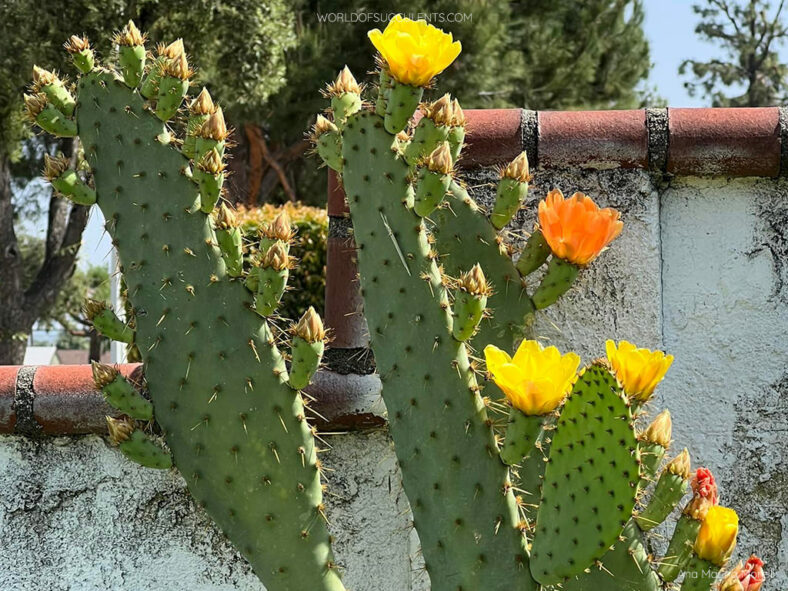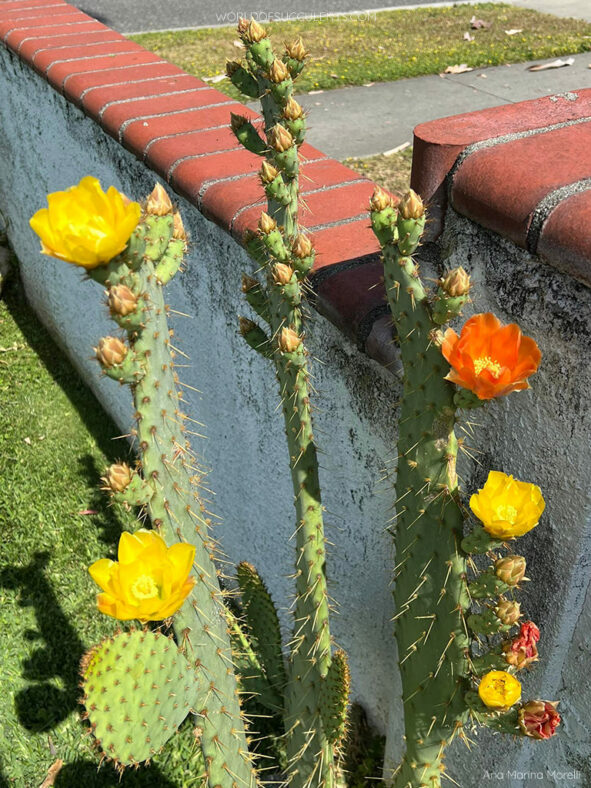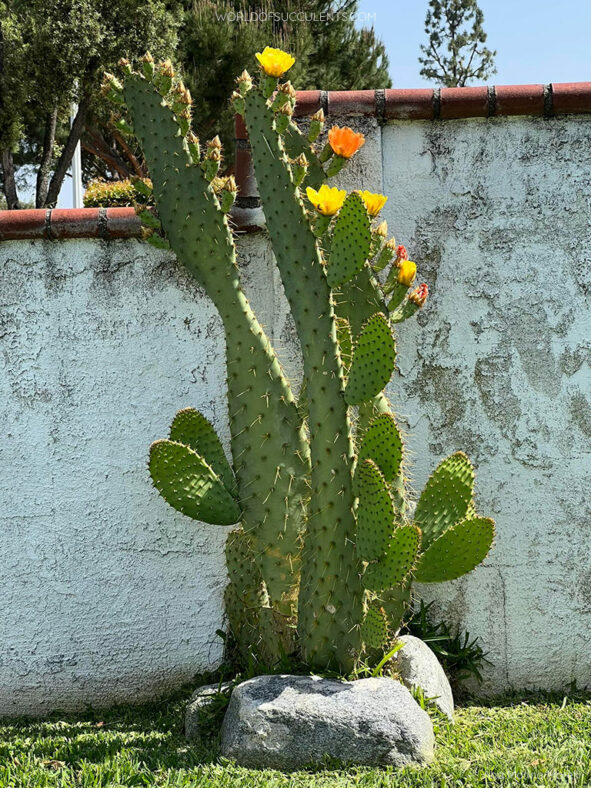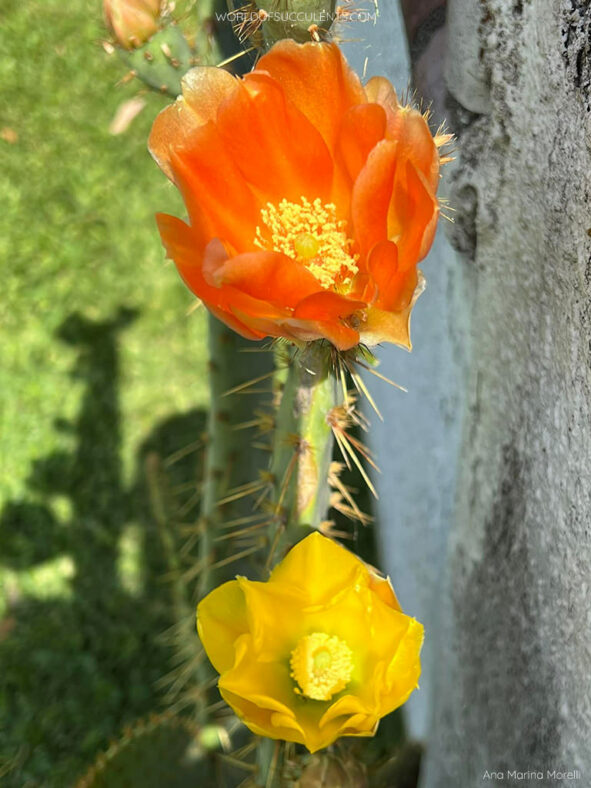There are several varieties of Opuntia engelmannii, the most distinctive of which is Opuntia engelmannii var. linguiformis.
Scientific Name
Opuntia engelmannii var. linguiformis (Griffiths) B.D.Parfitt & Pinkava
Common Name(s)
Cow's Tongue Cactus, Cow Tongue Prickly Pear
Synonym(s)
Opuntia linguiformis
Scientific Classification
Family: Cactaceae
Subfamily: Opuntioideae
Tribe: Opuntieae
Genus: Opuntia
Etymology
The varietal epithet "linguiformis (pronounced lin-GWEE-form-iss)" means "tongue-shaped" and refers to the elongated pads.
Origin
Opuntia engelmannii var. linguiformis is native to native to the southern United States (Texas). Its native habitat is dry grassland.
Description
Opuntia engelmannii var. linguiformis is a shrubby or tree-like cactus with lance-shaped stem segments (pads) that become very elongated and often sickle-shaped with age. These pads can grow up to 4 feet (1.2 m) long and 7 inches (17.5 cm) wide. The spines are absent or up to 3 irregularly arranged at most distal areoles. They are yellow when young, darken to blackish as they age, and can measure up to 1.2 inches (3 cm) long.
During spring, Opuntia engelmannii var. linguiformis produces large flowers, usually yellow or sometimes orange to pink or red. The flowers can reach a length of 3.2 inches (8 cm), including the floral cup, and a diameter of 1.6 inches (4 cm). The fruits are almost spineless, red to deep purple, and contain reddish-purple pulp and tan to grayish seeds. They are egg- to barrel-shaped and can grow up to 3.6 inches (9 cm) long and 1.6 inches (4 cm) in diameter.

How to Grow and Care for Opuntia engelmannii var. linguiformis
Light: Opuntia engelmannii var. linguiformis thrives in full sun, but some shade during midday and afternoon can prevent sunburn in very hot climates. A window that receives sunlight 6 hours a day works best when grown indoors.
Soil: This cactus requires a well-draining soil mix. You can use a commercial cactus potting mix or create your own.
Temperature: Extremely tolerant of high temperatures, Opuntia engelmannii var. linguiformis prefers cooler temperatures in winter. It grows best in USDA Plant Hardiness Zones 8a to 10b, with average minimum winter temperatures ranging from 10 to 40 °F (-12.2 to 4.4 °C).
Watering: From spring to fall, water moderately and let the soil dry out completely before watering again. In most areas, rainfall will be enough for established plants. If potted, never let the container sit in water. Suspend watering during the winter.
Fertilizing: Opuntia engelmannii var. linguiformis does not need fertilizer when planted in the ground. However, it will benefit from fertilizing during the growing season when grown in a container. Apply a water-soluble fertilizer. Suspend feeding during the winter when the plant goes dormant.
Repotting: Repot only when the cactus becomes potbound or is too large and unstable in its container. Choose a slightly larger container with drainage holes at the bottom. The best time for repotting is late winter or early spring.
Propagation: You can propagate Opuntia engelmannii var. linguiformis by stem segments or seeds. Using stem segments is the easiest method and yields faster results. Take stem segments in early summer for best results, and sow the seeds in late spring.
Learn more at How to Grow and Care for Opuntia.
Toxicity of Opuntia engelmannii var. linguiformis
Opuntia engelmannii var. linguiformis is not toxic to humans or pets. However, keep the plant away from pets and children as it has harmful spines and glochids that may cause skin irritation.
Links
- Back to genus Opuntia
- Succupedia: Browse succulents by Scientific Name, Common Name, Genus, Family, USDA Hardiness Zone, Origin, or cacti by Genus
Photo Gallery
Click on a photo to see a larger version.


